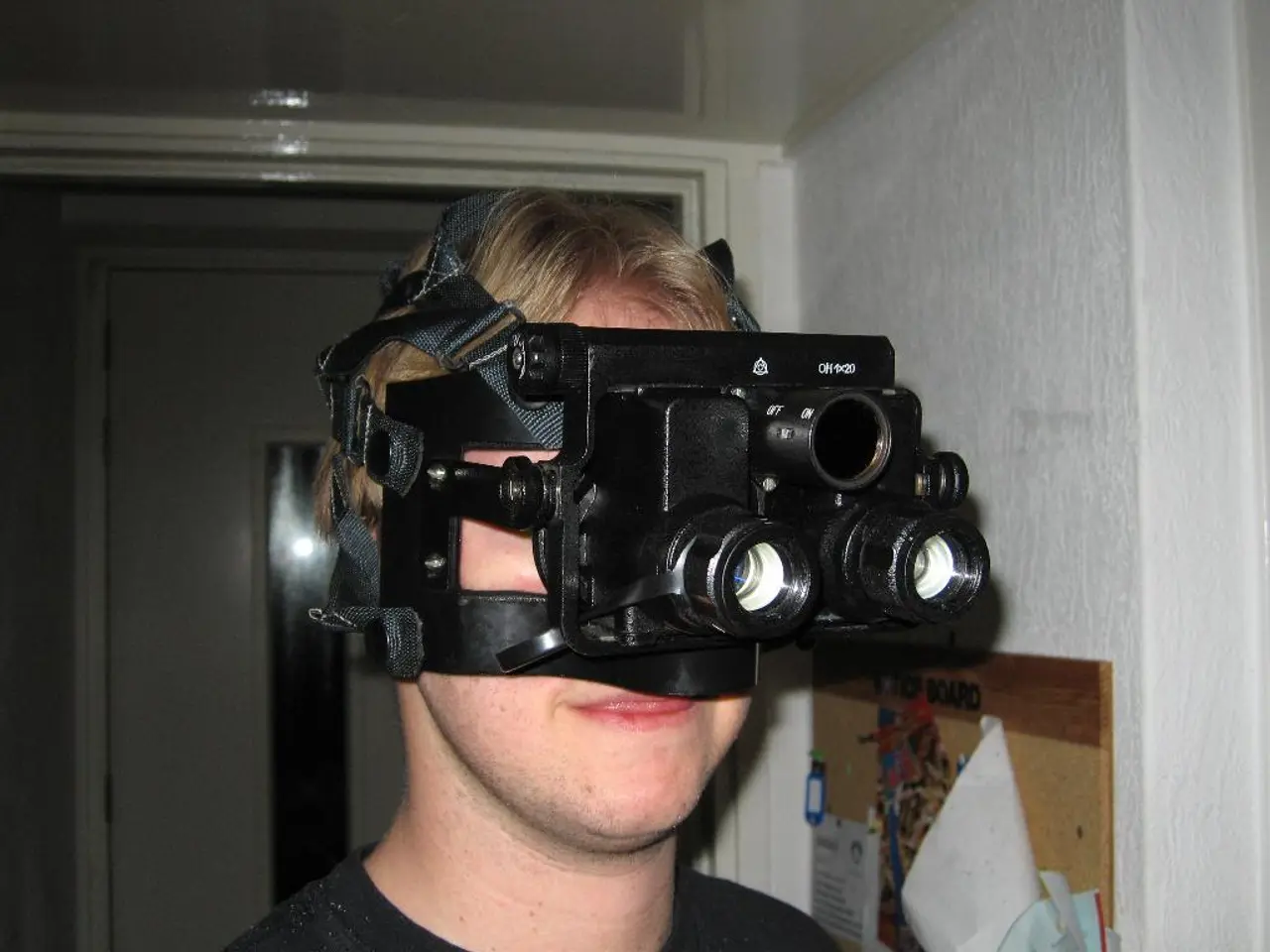Guide for Training Your Staff to Create and Distribute Virtual Reality Coursework
In the rapidly evolving world of corporate learning, virtual reality (VR) is increasingly becoming a game-changer. This innovative technology is not just about creating immersive experiences, but also about fostering safety, engagement, and continuous learning.
The Train-the-Trainer model stands as the pillar of successful VR adoption in learning organisations. By equipping key employees with the skills to manage VR learning solutions from concept to delivery, companies can deliver high-quality VR training sustainably. This model allows internal trainers to create engaging VR experiences tailored to their organisation's unique needs.
One of the key advantages of building internal VR training expertise is the strategic advantage it delivers. Faster content deployment, enhanced customization, improved scale and consistency, and cost reductions are just a few of the benefits. Advanced XR training systems offer cutting-edge tools that internal teams can leverage for diverse learning applications.
But what about the challenges? Common hurdles include technical complexities, reluctance to adopt new methods, and content development hurdles. However, proactive solutions to these challenges include comprehensive onboarding and support materials modeled on proven VR training implementation best practices. Understanding evolving trends in VR helps Train-the-Trainer programs stay relevant and innovative.
VR fire safety training and virtual reality leadership skills development are examples of how safety and engagement can coexist in VR training. Safety considerations should be integral to the design of VR training, with guidelines such as safety tips for VR training being important.
Encouraging experimentation with new VR applications and sharing successes and challenges openly fosters a culture of continuous learning and innovation within teams. This approach, combined with supporting trainers with resources, community engagement, and leadership endorsement, fuels ongoing motivation.
Gaining executive buy-in for VR training is crucial and can be ensured through evidence-based approaches. Guides on measuring the impact of virtual training programs provide best practices for capturing meaningful data and iterating course designs. Practical Train-the-Trainer programs incorporate an evaluation mindset, setting clear KPIs and leveraging platform analytics to monitor learner engagement, performance, and business impact.
Successful VR trainers combine instructional design tailored to immersive environments, technical proficiency in VR hardware and platforms, and engaging facilitation skills. Exploring use cases where virtual reality empathy or soft skills training benefits learners enriches internal trainers' perspectives, equipping them to create more impactful content.
Investing thoughtfully in VR training capabilities enables continuous evolution, innovation, and a future-proof workforce. As the trend towards digital transformation and immersive technologies continues to grow, embracing VR in corporate learning will undoubtedly play a significant role in shaping the workforce of the future.
Read also:
- Exploring Hemp Insulation: Is This Eco-Conscious Solution Worthwhile for Your Construction Project?
- Construction fleet and urban transport emissions could see a significant reduction with the implementation of biogas as a game-changing solution.
- Fiercely battling for survival, a student hails from Ludwigsburg
- When One Pursues the Ideal Romantic Partner While Currently Wedlocked





